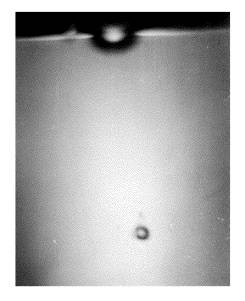
STRUCTURE
|
WRC About center
|
|
|
|
|
Studies of light-induced phase transitions in water and aqueous solutions of electrolytes as well as in organic fluids are carried out in the laboratory. At present the effect of dissolved gas under stimulation of optical breakdown in liquids is investigated in collaboration with the Institute of General and Inorganic Chemistry of Russian Academy of Sciences. The results of investigation of optical breakdown have extensive applications in medicine (particularly, in ophthamologic microsurgery).
Staff
The laboratory is headed by N. F. Bunkin, D.Sc.
PRINCIPAL FIELDS OF RESEARCH
BASIC EQUIPMENT
MOST IMPORTANT RESULTS
 |
The act of boiling at the atmosphere pressure and 98°C is shown in the picture. The phenomenon is conditioned by the fact that laser shooting of liquid stimulates coalescsence (merging) of nanobubble (bubston) cluster. As the result a vapor-gas bubble of the size of several microns arises. Such a bubble vanishes immediately far from the boiling point, whereas this bubble serves as center of heterogeneous boiling close to the boiling point.
|
|
|
|
|